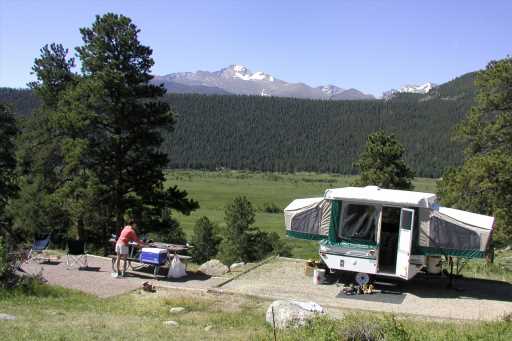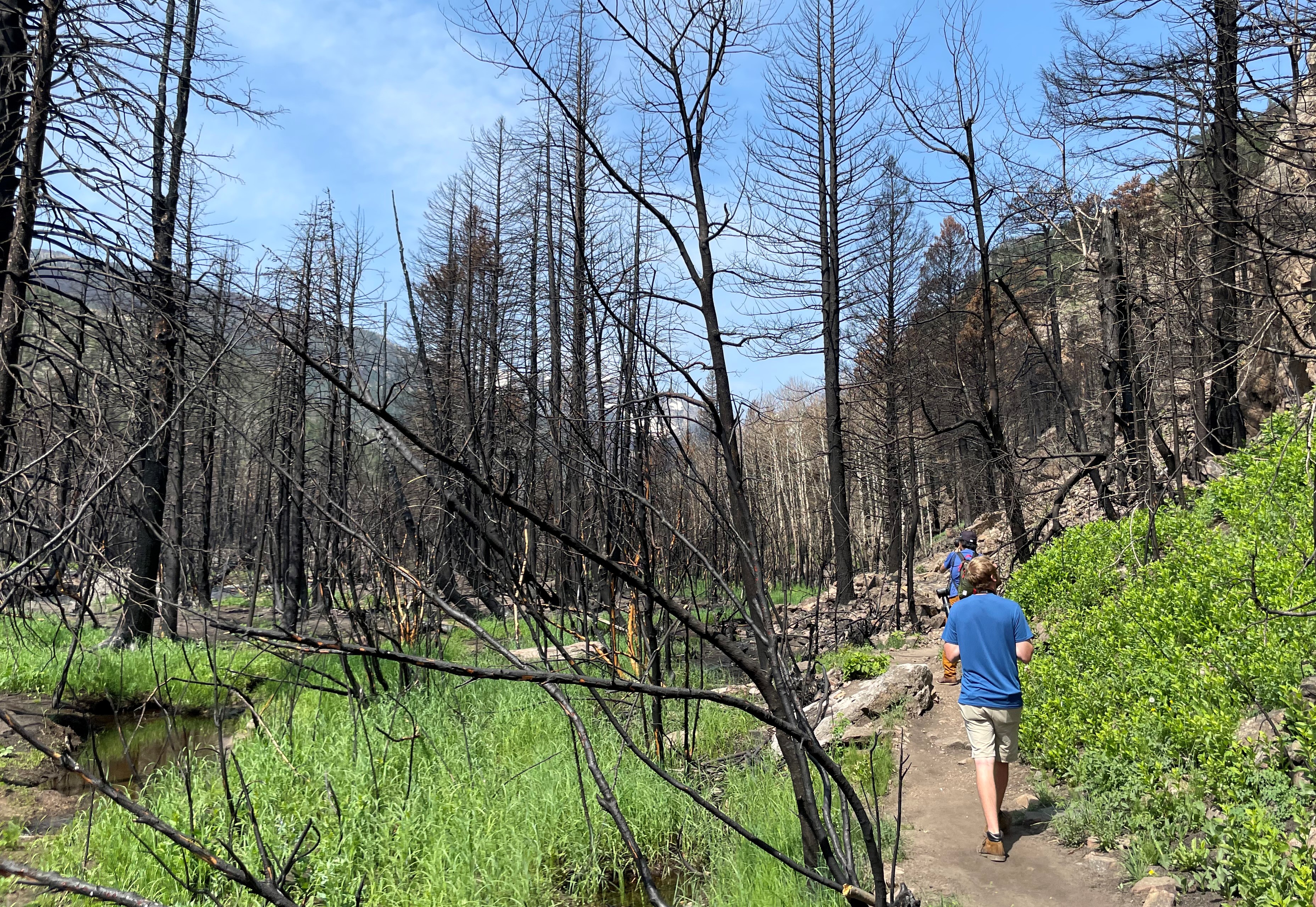
The largest campground in Rocky Mountain National Park is set to undergo a major modernization project next summer that likely will close it until 2024, park officials announced last week during a tour by National Park Service director Chuck Sams.
Caleb Waters, facility manager for Rocky Mountain National Park, said officials are hoping to finish design work for the Moraine Park “rehabilitation” project in time for the contractor to begin work next summer, and if that is accomplished, the 244-site campground will be closed during construction. Park officials are hopeful it will be finished in time to reopen for the summer of 2024.
The project will relocate some campsites away from wetlands, replace failing water and sewer lines that date back to the 1960s, bury three miles of power lines that currently are above ground and make the campground more accessible for people in wheelchairs.
“We are going to have 17 accessible camping sites,” Waters said. “We don’t have any right now. We’re going to be putting in accessible paths so the campers can get from their vehicles to the sites, from their vehicles to the comfort stations.”
The water and sewer replacements are long overdue.
“We’re replacing the water treatment plant, with three-plus miles of water line being replaced,” Waters said. “It’s much-needed infrastructure. It’s all from the ‘60s. The sewer line is clay pipes. With the old water lines, we’re losing water. It’s leaking out of the pipes and joints. Likewise with the sewer system, rainwater infiltrates the sewer system.”
The closure will likely increase demand for other nearby camping and lodging options, but Estes Park has been through those before, said town spokesperson Kate Rusch. “It’s always difficult when service disruptions are necessary, but it’s a small price to pay when the end result is major improvements. We appreciate the park’s continuous efforts to improve the visitor experience.”
The $19.9 million upgrade will be funded through the Great American Outdoors Act, which was enacted by Congress in 2020 to address pressing deferred maintenance needs across the national park system.
Sams, who grew up on the Umatilla Indian Reservation in Oregon and became the first native American to lead the National Park System last December, said the nation’s parks have about $24 million in deferred maintenance. Moraine Park is a prime example.
“The funding that we receive from GAOA is great, and we’re going to be able to implement a lot of that,” Sams said. “But it’s only going to cover about less than a third of what we really need to get done over the next several years.”
Officials also announced that additional federal funds are coming that will enable the park to expand ongoing “fuel treatment” work in the Deer Mountain area on the east side of the park, removing potential wildfire fuel in forested areas to reduce the threat of wildfire spreading into the Estes Park valley. Mike Lewelling, the park’s fire management officer, brought maps and photos of the 2020 East Troublesome fire to a briefing with Sams, explaining how fuel treatment efforts there in recent years were instrumental in saving Estes Park from being lost. Deer Mountain is less than three miles from town.
“It made a big run, spotted into the meadow (in Moraine Park), spotted over the road and was going to make a run up Deer Mountain,” Lewelling told Sams. “Our hotshot lieutenant said we were literally one minute from catching the fire or losing it. They actually had a spot fire. The spot fire landed in one of the fuels treatments that we did, and they were able to catch it.”
Fuel treatment includes thinning forest areas with chainsaws and by removing brush, branches and small trees by hand. It also can involve starting small controlled fires to remove excess vegetation, leaves and pine needles. This year crews are removing fuel and building piles which will be burned next year, according to public affairs officer Kyle Patterson.
The Department of the Interior has earmarked $103 million from this year’s Bipartisan Infrastructure Law for wildfire reduction efforts, with $22 million going to national parks. Rocky Mountain National Park plans to spend $39,000 of the BIL funds on additional fuel reduction efforts on Deer Mountain next year, Patterson said.
Lewelling said the top priority in fuel treatment efforts over the next few years will be to reduce the risk of wildfire spreading from the park to communities at its eastern edge — Glen Haven, Estes Park and Allenspark.
“The downwind communities are at very high risk,” Lewelling told Sams. “We’re trying to get a moat around our communities, and Deer Mountain is a very high priority. That funding this year is going to be combined with some other funding to do a treatment from Deer Ridge Junction and create a buffer along the road there.”
Park officials also revealed that the Green Mountain trail on the west side of the park, in an area that was devastated by the East Troublesome fire, will soon reopen.
Subscribe to our weekly newsletter, The Adventurist, to get outdoors news sent straight to your inbox.
Source: Read Full Article












